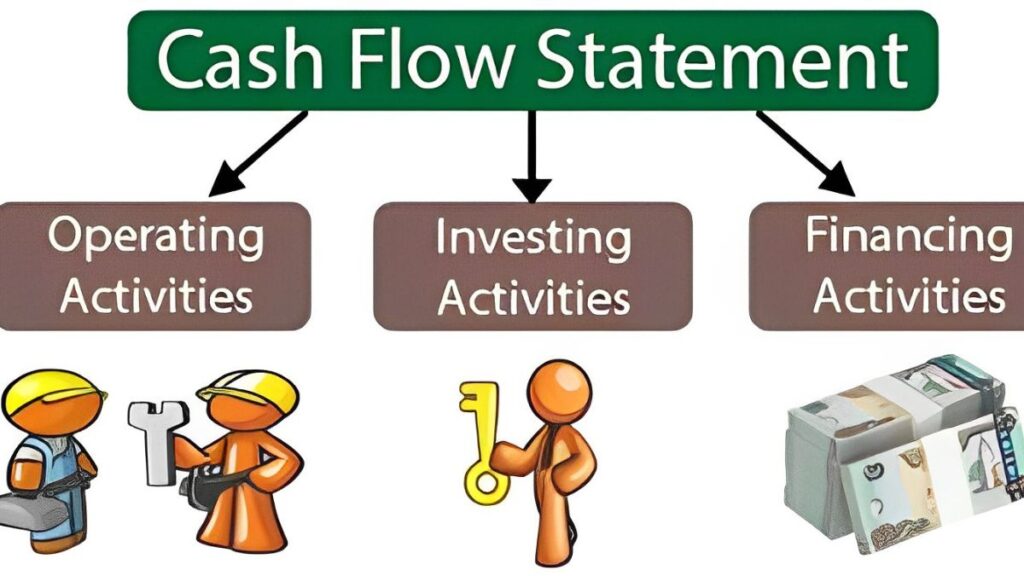Every business relies on cash flow to survive. If you have too little of it, you will have problems paying your suppliers or employees on time. You can invest in extra inventory, machinery, or a much-needed store renovation if you have too much. On the same basis, you should conduct a cash flow analysis of your business on a regular basis to run it smoothly.
The numbers on a firm’s statement of cash flow, illustrate where a company gets its money from(cash inflows) and how it spends it (cash outflows) and can be used to determine its cash flows.
The cash inflows and outflows from a company’s continuing operations, outside investment sources, and payments for operations and investments for a particular quarter are all included in the cash flow statement. These comprise cash flows from finance and investment operations and cash flows from operational activities (CFO).
A business examines how it generates and spends money over time in a cash flow analysis. You can use it to determine where your money goes and how much cash you have at any given moment.
This article will explain the cash flow statement and how it may be used to examine an investment business.
Preparing a cash flow statement is the first step in performing a cash flow analysis. With a cash flow statement, you can see how much cash your business comes in and how much it expands – or simply, how much money you’ll have available. The cash flow statement has three main sections in it: investing activities, operating activities, and financing activities.
Significance of Cash Flow Statement

The two types of accounting that control how cash flows through a company’s financial statements are accrual and cash. You need to have a cash flow analysis.
Most publicly traded corporations employ accrual accounting for its cash flow analysis, which records revenue as income as it is produced rather than when the company gets payment. Even when there haven’t been any monetary payments received, expenses are recorded when they are incurred.
For instance, if a business registers a sale, the revenue is shown on the income statement even if the business might not get cash immediately. According to accounting principles, the business would profit from its income statement and be required to pay income taxes. But no monetary exchange would have taken place.
Additionally, the transaction would probably result in an initial cash outflow since the firm would need to spend money on inventory purchases and the production of the product that would be sold. Businesses frequently give clients 30, 60, or even 90 days to settle their invoices. Sales would be treated as accounts receivable. Thus cash would not be affected until they were paid.
With cash accounting, costs are documented when they are paid, and payment revenues are recorded when they are received. In other words, when cash is collected or paid, respectively, revenues and costs are recorded.
From an accounting perspective, the business can appear lucrative, but if the receivables go uncollected or past due, the business may have financial difficulties. A cash flow statement is essential for analysts and investors since even prosperous businesses often struggle to manage their cash flow effectively.
A Cash Flow Statement Consists of Three Distinct Sections

Cash Flow From Operations
The amount of cash from the income statement that was originally reported on an accrual basis is reported in this cash flow section. Accounts receivable, Accounts Payable, and Income Tax Payable are some things in this area.
A receivable payment by a client would be reported as cash from operations. Cash flow from operations is the measurement of changes in current assets or current liabilities (things due in one year or less).
Cash Flow From Investing
The cash flow from sales and acquisitions of long-term investments like fixed assets, which include real estate, machinery, and equipment, is tracked in this cash flow analysis area. Purchases of furniture, property, houses, or automobiles fall under this category.
Cash is often expended as a result of investing activities, including purchasing investment securities, expanding a firm, and investing in plants, property, and equipment.
The selling of assets, enterprises and securities generates cash inflows. Investors frequently keep an eye on capital expenditures made for a company’s physical assets’ upkeep and expansion in order to support operations and competitiveness. Investors may therefore observe how a firm is putting money into itself.
Cash Flow From Financing
This section of cash flow analysis contains reports on both debt and equity transactions. Any cash flow statement that includes dividend payments, stock and bond purchases, sales, and dividend payments would be regarded as cash flows from financing operations. This part would be used to record money obtained from borrowing money or money needed to settle long-term debt.
This part is crucial for investors who favour investing in dividend-paying firms since it provides information on cash dividends paid, which shareholders receive instead of net income.
Cash Flow Formula for Analysis
The amount that shows on the cash flow statement as “net cash provided by operating activities” or “net operating cash flow” can be used to characterize a company’s cash flow. There isn’t a definition that is generally acknowledged, though. For instance, many financial experts believe that a company’s net income, depreciation, and amortization together make up its cash flow.
Investors should stay with utilizing the net operating cash flow number rather than the shortcut, even if it frequently comes near to net operating cash flow.
Although many ratios may be included in a cash flow analysis, the improvements over the past provide an investor with a place to start when assessing the build-a-long terms of a company’s cash flow.
Conclusion
Positive cash creation indicates that a firm is well-positioned to avoid excessive borrowing, grow its business, pay dividends, and weather challenging times.
For investors, free cash flow is a crucial assessing factor. It records all the beneficial aspects of internally generated cash from a business’s activities and keeps track of how much cash is used for capital investments.
You can maintain a sustainable operation by taking proactive steps based on cash flow analysis. Using your net income adjusted for key cash inflows and outflows will give you a clearer picture of how much cash is generated by core operations, your financing requirements, and your small business’ growth potential.
For more insights and ideas related to businesses, marketing, social media, financial awareness, business essentials and technology check out BiznessHub, to explore further opportunities and knowledge.
FAQs
Ques. What is Cash Flow Analysis?
Ans. It refers to the cash and cash equivalent transactions happening in the company. In is considered to be the inflow and cash, and out means the outflow of the cash.
Ques. What are the kinds of Cash Flow Analysis?
Ans. There are three types of Cash Flow Analysis-
— Cash Flow Statement
— Cash Flow from Operations
— Cash Flow From Financing
Ques. What is a Cash Flow Statement?
Ans. The Cash Flow Statement is the statement that comes in and out in a financial year.




